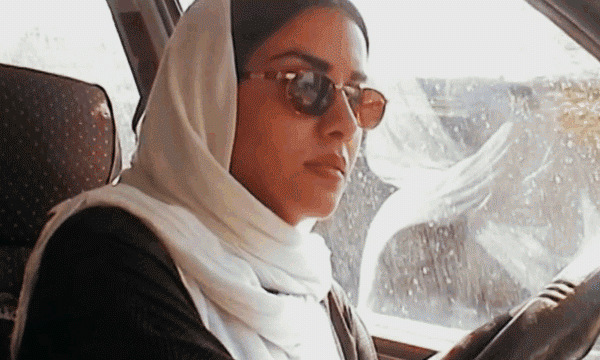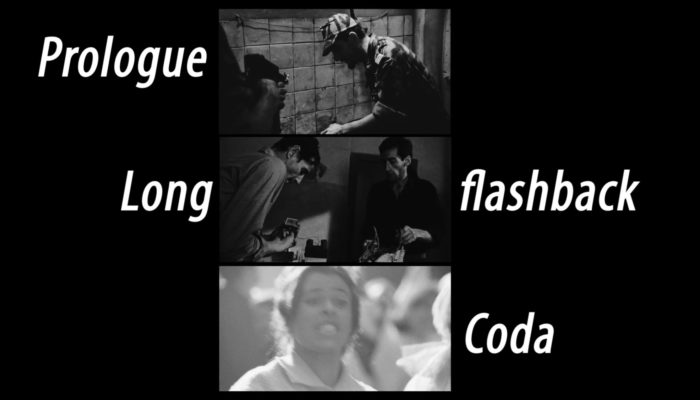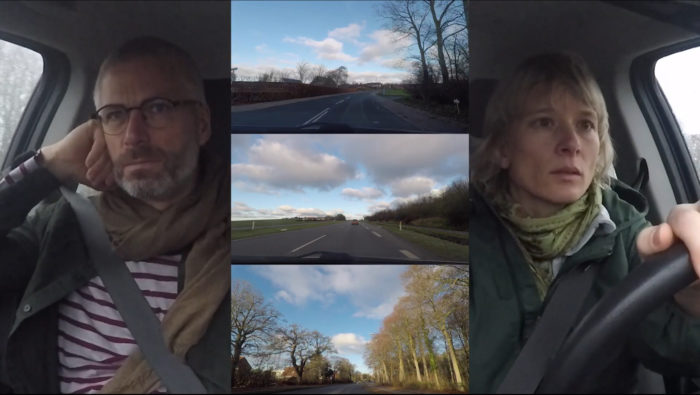Response 14 - What Would Tom Do?

Dear Marie,
This task was hard.
M:I
It was hard partly because of the quantity and range of footage provided. It seemed a mission impossible to shrink and combine it in a five-minute film. It took me a long time to establish the parameters that could shape the material.
It was hard partly because of the character of much of the material itself, which recorded intimate moments (in the non-sexual sense) of our relationship and family life. To be required, as the task said, to ‘tease out what you find exciting, exhilarating or fun’ in this material, ‘to foreground the “action”’, seemed again a mission impossible.
Proximate modes
One tactic I notice I have used in the project when faced with a difficult task is to fall back on my role of father and simultaneously to ironize that role. This I what I did when I was stuck with the Year Zero Reconstructed task, when I made a slideshow of the baby snaps like any proud dull dad would do. Ditto here. My solution to the mission impossible in this case has been to generate the film according to a principle of bad dad-humour and dad-ish overexcitement with the tech.
For me, one of the interesting aspects of our project are the blurred boundaries between it and other, proximate, modes. The project is at once an academic undertaking and a set of self-help exercises that might be set by a relationship counsellor. It’s like a family scrapbook as well as practice as research. And so, I think of the ugly object I’ve made in response to this task as at once a formally experimental short film, a set of silly in-jokes to make the family grin or groan, and a fan video to Tom Cruise.
Part of the family
The task asked: what would Tom Cruise have made of this material? I simply didn’t know the answer to this one, so my solution has been to invite Tom round to help out. Tom Cruise is, of course, already part of our family. It is a ritual for us both to see the new ‘Mission: Impossible’ when it comes out in the cinema. We love watching clips of Tom on The Graham Norton Show, GIFs of him running, or whatever. When, Irishly, I find myself embarrassed by a moment of family tenderness, I mockingly sing the chorus from Berlin’s ‘Take My Breath Away’, the tune from Tom’s early masterpiece, Top Gun (1986), in which he exhibits the full flush of his famous commitment and boyish perspiring beauty. So, it was not so strange to invite Tom to collaborate on this short film with us. In this sense, and because you invoked Tom in the task instructions, I feel I have honoured the parameter that I could only use material provided by you.
You might be tempted to see the interpolations of Tom as eruptions of the fantasy of my paternal persona as manifested in the film — how the persona wishes himself or his life to be — but it’s not so. Instead, I see Tom as the fantasy of the footage itself. Somewhere in the material you provided is an action movie struggling to get out. Hence the naff jump cuts and queasy split screen in the early section: these devices are spells that conjure Tom’s kinetic athleticism and multinational mobility from the consoling banality of local family existence.
Yes it’s terrible but here’s the film
Yes, the film I’ve made is terrible. But it represents further development of certain formal concerns I’ve used in other work.
The Danish SatNav sequence is the most purely parametrical, in that I restricted myself, a little perversely, to images of you and I from the footage you provided in which we are not speaking. Laid end to end, these dictated the length of the sequence, which was accompanied by all the SatNav instructions from one journey from Horsens to Aarhus. The instructions are in order but are sometimes overlaid to keep to the length. The slideshow of stills (generated using a setting in VLC) in three stacked screens illustrates the same journey described by the SatNav, as per a solution I found for a section of my Battle of Algiers videoessay. The stills were a failed experiment — I had hoped they would give the impression of time lapse, but I think the camera needs to remain static to make that happen. I appreciated the fact that the SatNav voiceover is female, because that’s rarely the case.


I have borrowed from Kevin B. Lee’s ‘desktop documentaries’, for example this one, the way of treating the ‘document’ sections that state the task and parameters. I am interested in this approach because it seems a way in to making an academic ‘audiovisual book’. I imagine such a book (which I’m planning on a film and history theme) employing a combination of three, at least, registers currently being used for videographic criticism: poetic/allusive, reflexive/desktop (as in Kevin Lee’s work) and explanatory/documentary. In ‘What Would Tom Do?’, I’ve clumsily and tentatively begun to imagine the form my book might take.
One principle of ‘combination’ used here and that I want to develop is that of unresolved juxtaposition, in which the relationship between elements is left to the viewer to decipher. This device can manifest itself as an arch tone where, say, sequencing is intended humorously, as in the film when James Corden appears with Tom in unexpected guise having been mentioned in the dialogue; but in my Battle of Algiers essay I used it to suggest a critical position about an aspect of that film (see around 2:50 in the Battle essay). Sequencing like this is a crude version of conceptual or associative montage as theorized by the likes of Eisenstein, but there is also unresolved juxtaposition at work in montage within the frame, as in the SatNav section.
I also see the different editing approaches (jump cuts versus long takes etc.) as another version of unresolved juxtaposition, but the editing here was also intended as part of the homage dimension of the film. If it’s a fan video for Tom Cruise, it’s also a fan letter to auteurist cinema. Abbas Kiarostami is explicitly mentioned, and I apologise to the great man for using a GIF from his film Ten (Dah, 2002) at the end (I imagine this woman to somehow represent our daughter Lisa, who stars and sings at the beginning of the film, now grown up and driving her own car). But Jean-Luc Godard is alluded to also, and the jump cutting and car context might dimly recall this sequence from Breathless (À bout de souffle, 1960).
